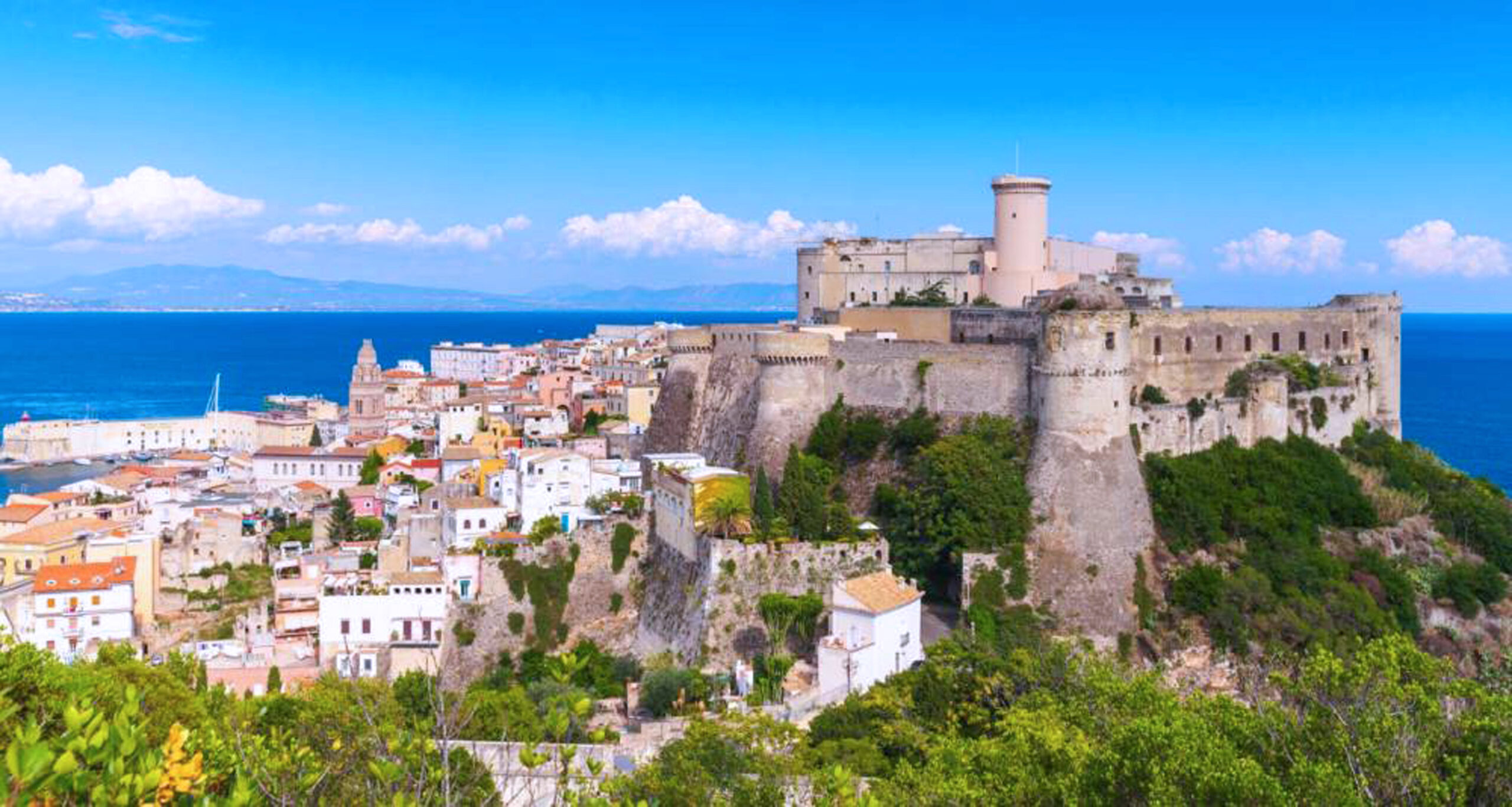Gaeta is one of the truly fascinating and historic places in the Province of Latina. Situated on a bulbous, roughly triangular promontory jutting out into the Tyrrhenian Sea, it is at the center of the wide Gulf of Gaeta. With its position overlooking the sea along the coastline between Rome and Naples, Gaeta has been a strategic location for both trade and the military throughout its long history. Like much of this stretch of coast, Gaeta was a summer destination for the wealthy residents of ancient Rome. It is still popular with vacationing Italians, where the coastline has gained the nickname Riviera di Ulisse – Ulysses’s Riviera.
In the Middle Ages, Gaeta was an independent Duchy with profitable trading connections throughout Europe; it even had its own currency. In the 16th century, the town fell under the rule of Naples and was fortified as a key defensive point for the Kingdom. During the 19th century’s struggle for Italian unification, Gaeta was first a refuge for the Pope and later for the Bourbon royal family of Naples and the Kingdom of the Two Sicilies. Beginning in 1860, the Bourbons were besieged in the city, which fell in February 1861, a key event in the unification of Italy.
Gaeta’s most striking feature is its fortress, Castello Angioino-Aragonese, which stands above the center. The present building is composed of two distinct complexes, one dating primarily to the 13th century and the other from the 15th and 16th centuries. But perhaps the most unusual feature of Gaeta is the large, ruin-dotted hill known as Monte Orlando. It divides the historic portion of the town from the modern suburbs and beach areas. While exploring the hillside, visitors will find the ruins of fortifications from different eras, such as gun batteries from the 18th and 19th centuries, as well as parts of a Roman villa. The most unusual and dramatic sight is at the top of the hill – a huge round Roman mausoleum, built to dominate the landscape and sea.
On Monte Orlando, visitors flock to Santuario della Montagna Spaccata and Grotta del Turco, pilgrimage destinations offering unusual legends and the stories of two miracles. The first occurred at the moment of the Crucifixion of Christ, when the mountain is said to have split in two, leaving a great fissure running vertically through the cliffs, high above the sea. The religious complex built to commemorate the event is Santuario della Santissima Trinita, although it is more commonly called Santuario della Montagna Spaccata, the Sanctuary of the Split Mountain. Legend recounts that centuries later, when Turkish pirates were terrorizing Italy’s coastline, they lurked around this headland. Here you will find an impressive rock arch at the foot of cliff called the Grotta del Turco – the Cave of the Turk, which was the lair of a pirate captain. While proclaiming his disbelief of the Christian myth of the split mount, he was astonished to find his hand sinking into the rocky wall of the Montagna Spaccata. He left behind a handprint in the stone. The miraculous La Mano del Turco – handprint of the Turk, is preserved in a rock face by the path, commemorated with a Latin inscription.
This cylindrical hilltop mausoleum, Mausoleo di Lucio Munazio Planco, was built as a monument to Lucius Munatius Plancus, who lived from approximately 90 BC to 1 AD. A Roman senator and consul, he was an ally of Julius Caesar. He owned a fabulous villa in Gaeta and the mausoleum was likely built on its grounds. The mausoleum is situated on a bare plateau at the summit of Monte Orlando. Its huge construction has provided a striking landmark for ships for over two thousand years.





